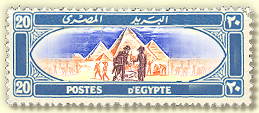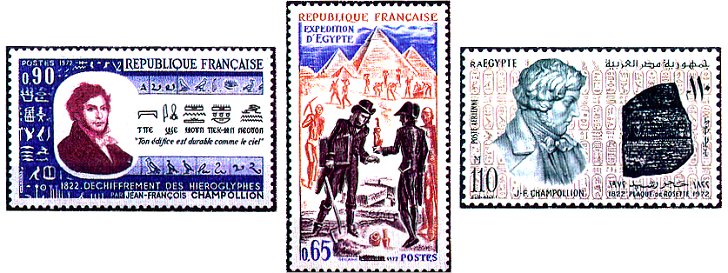

During the French Campaign in Egypt, from July 1798 to September 1801, a full postal service was planned and put into effect, intended to enable the inhabitants of the country to correspond easily among themselves. (Order No. 2929) of the Commander in Chief, dated at Cairo the 15th Messidor of Year 6 = 2nd August 1798. It seems that in actual fact this service was exclusively for the benefit of the expeditionary army, either for official correspondence or for an exchange of personal messages between military personnel. The circulars, postal tariffs, timetables, etc., had been translated into Arabic for the use of the native population, following the instructions of general Bonaparte, but this effort did not produce the positive result expected. This attempt to give Egypt a well organised postal service which would ensure, with the maximum of security and dispatch, the movement of government and private mail was unable to survive because of the lack of qualified personnel and backup organisation. Bonaparte set up an administration with headquarters at Boulak for everything concerning Nile navigation and a service of river transports was established; regular sailing's took place at fixed dates from Boulak, Rosetta and Damietta. Post offices were opened in Cairo and seven towns of Lower Egypt. Natives were permitted to make use of the postal facilities. Sucy, chief army commissioner, was made organiser and director of the new postal administration. He left Egypt on December 15 1798. This was the :first time the government in Egypt had set up a system for the transmission of private correspondence. The use of special messengers, ships, camels and donkey was normal. but we can surmise that the French were also making full use of the Turkish postal system which provided established places available to receive the mail transported to there by donkey and camel from the interior and sent by means of carrier pigeons to the cities and the more important towns of the country. It is known from recorded markings that there were six central points ready to receive and dispatch military and governmental mail, namely Cairo, Alexandria, Damietta. Rosetta, Benesonef and Siouth. It is possible that there existed other marks, because the French had established military stations in other places, like Katieh, Bilbeis, Benesseh, Esnah, Assouan, Qena, Tanta, Suez, Kosseir, Minieh, Samanoud, Aboukir, Girga and Fayoum. However no markings for these have been seen to date and in some cases the French presence was for no more then a week or two. As well as the town markings there exist military markings for 'Armee de la Mediterannee' and the 'Comm re. Ordr. en Chef' and letters with manuscript place markings. All known covers are on heavy, hand made paper of excellent quality. They are generally folded double, so that the inner page could be used for the message, and the outer as a wrapper bearing the address. They were sealed with sealing wax. The only indication of the date is found on the message page which in some cases has been removed. Most letters are between generals and other officials but a few are private letters and have a manuscript number on them to indicate the fee to be paid. Whilst most letters are internal to Egypt a few are known to France but none of these bear any of the Egyptian markings. They do however have French markings applied on being received. These are naturally rare as the English had control of the Mediterranean and had an effective blockade of the Egyptian coast. However once in a while, usually under cover of darkness, a French or neutral vessel would slip in or out of port and a man was lucky if he received a letter from home once a year. Intercepted letters, written by the French in Egypt were published by Pitt to discredit the Directory accusing it of abandoning Bonaparte in Egypt for its own political purposes. Letters are known from Bonaparte and other French generals on printed letter headed paper. The French brought with them two printing plants. One operated by the Orientals Marcel and a staff of thirty-one. The other was privately owned by Citizen Mare Aural and printed the scientific periodical La Décade égyptienne. Napoleon's expedition was accompanied by 165 French scientists, artists and writers. In Cairo, the learned Frenchmen founded the famous Institute d'Egypte dedicated to the study of the antiquities, language, agriculture and medicine of Egypt. The most outstanding of their achievements were the report of an initial idea for the future Suez Canal, and the discovery of the Rosetta stone with inscriptions in Demotic, Greek and Hieroglyphs giving the key to the translation of Egyptian Hieroglyphs, for until that time it had not been possible to decipher the language. In 1822 Champollion published his paper, Lettre à M. Dacier relative à l'alphbet des hiéroglyphes phonétiques, proving for the first time that the hieroglyphic script operated on the phonetic principle. In 1972, 150 year anniversary, France issued a set of stamps to commemorate the expedition d'egypt and Champoilion and Egypt issued one for Champollion. 
|
|
|